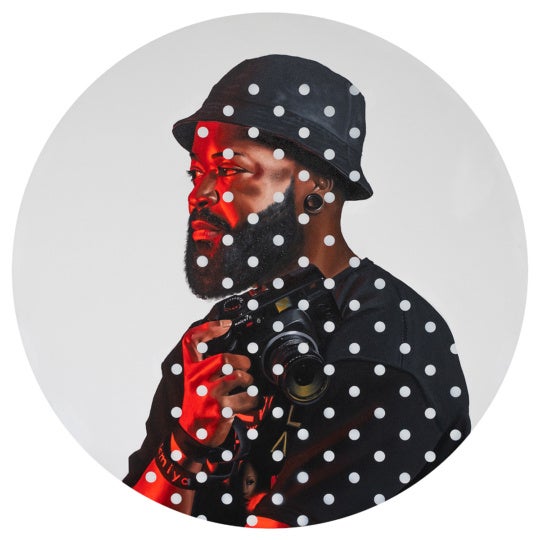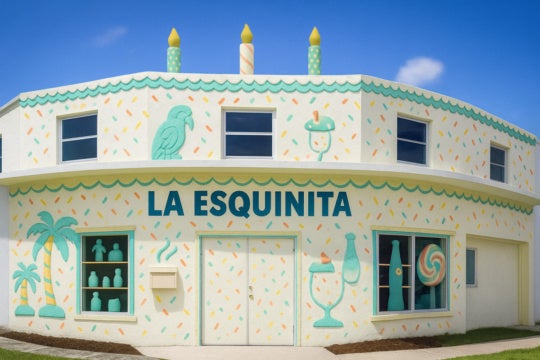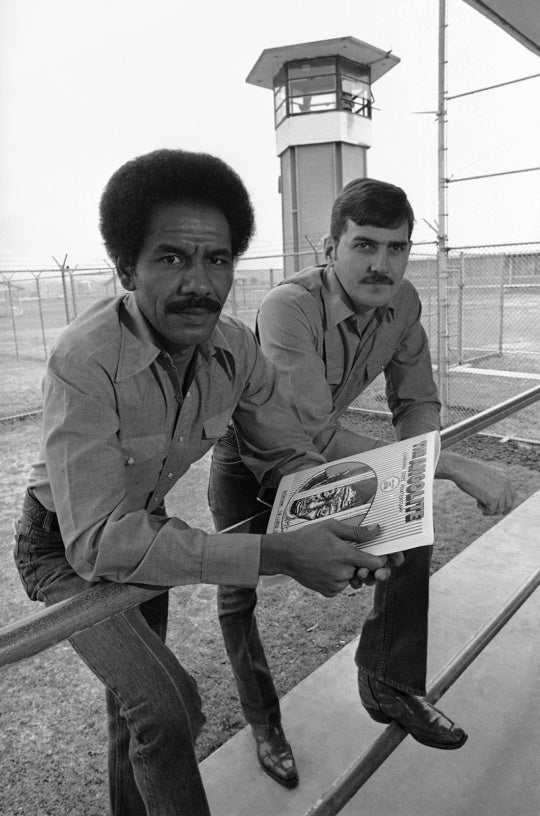
When artist and writer John Berger died on January 2, 2017, the art world paused to remember the man, but also to remember his groundbreaking book and BBC television series “Ways of Seeing.” In Nashville, Third Man Records (owned by musician Jack White) even held a 16mm screening of the entire series a few months after Berger passed. The man, his words and ideas haunt the wall texts in the galleries at 21C Museum Hotel in Nashville, where the exhibition “Seeing Now” grapples with identity and the interpretation of images, but is most effective in its examinations of how our actual physical senses build our perception of the world. The exhibition is made up of works from the 21C Museum’s collection and it’s the best display these galleries have hosted since 21C opened their Nashville outpost a year ago.
One of the show’s most affecting explorations of identity comes from Nigerian-born artist Toyin Ojih Odutola. Changing Circumstances: Changing Attitudes is a white-charcoal-on-blackboard portrait of a black woman. Now based in New York, the artist grew up in Alabama, and the woman in the portrait looks dressed in her Sunday best with a cock-eyed stylish hat. The white-on-black rendering reads like a photographic negative and offers a deft commentary about the role that color values play in our perceptions of race in America.
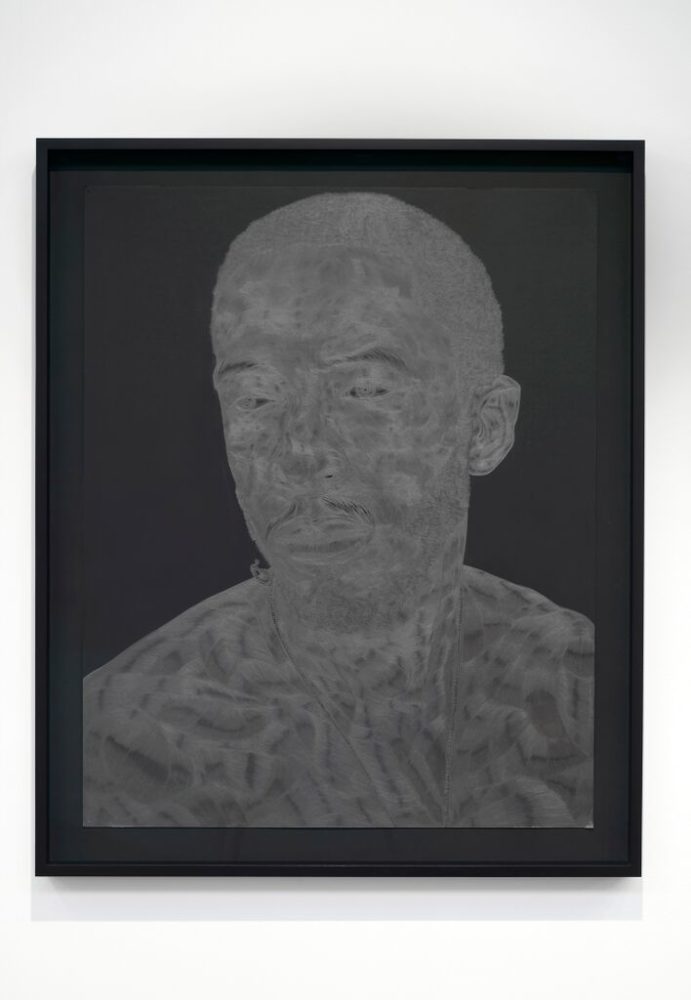
Ceramic friezes by Terence Hammonds recreate newspaper photographs in relief, depicting civil unrest during the 1977 blackout in New York City. These intricate works are floating in wooden light boxes – the constructions simultaneously recall vintage television sets and medieval stained-glass windows. The work’s metaphysical breaking-down of black and white into shadow and light make this another work that speaks to the good vs. evil projections that inform American racism. This is where the beat comes in is also the best title in the show.
Steve Mumford’s Baghdad Journal project features images from notebooks the artist kept while embedded with U.S. troops in Iraq in 2003. Those journals are the basis of Mumford’s massive paintings that speak to the interpretation of documentary images and the propagandistic potential of war reportage. Mumford engages those ideas by subverting expectations: He forgoes battles for the boring bullshit that makes up a soldier’s life between battles. That said, Mumford’s scale and compositions borrow from neo-classical history painting, making the soldiers in Female Barracks in Samarra appear heroic and noble as they nap in their cots and clean their rifles in their underwear. This is a work of art that changes the subject we see by changing the way we see it.
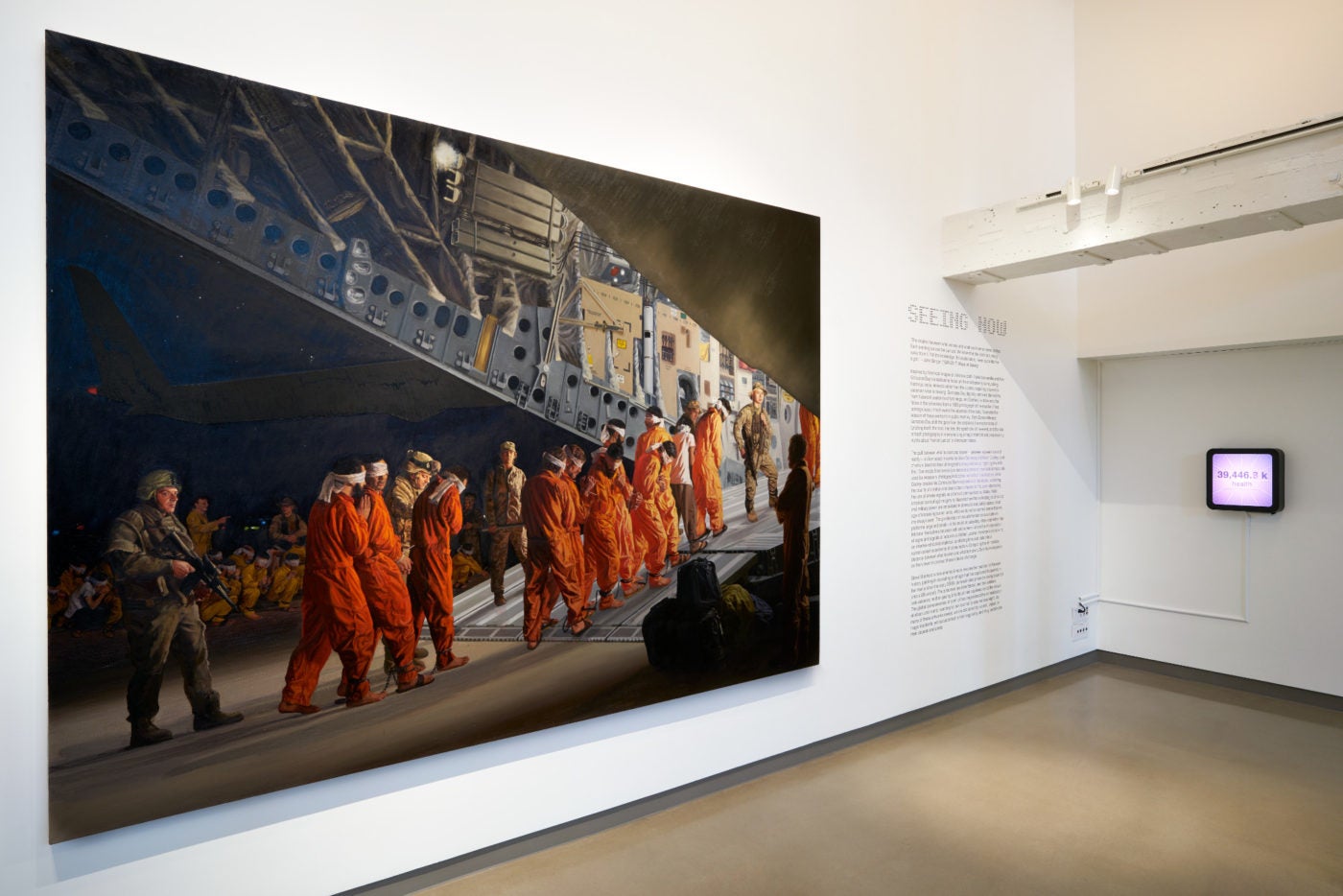
The Greek words psyche and delos can be interpreted as “to make the mind visible,” and the best works in “Seeing Now” reveal viewers’ senses to themselves, offering gallery-goers an opportunity to perceive their own perceiving. Interacting with these truly psychedelic works speaks to the power of art to affect rather than to simply “communicate.”
I love lenticular photography and a selection of George Legrady’s 2D works are one of “Seeing Now”’s highlights. With titles like, At the Bar, In-Between Moments, In Conversation, and Magnetic, Legrady offers a secret invitation to a night on the town. The refracted images that shift across the artist’s panels are black-and-white photographs that the Hungarian LeGrady took at an emigrants ball in Canada in the 1970s. Shifting between these scenes, one feels like a party crasher and a time traveler and even a voyeur all at once. Legrady’s playful medium highlights our gazing and demonstrates the role viewers can play in activating a work of art.
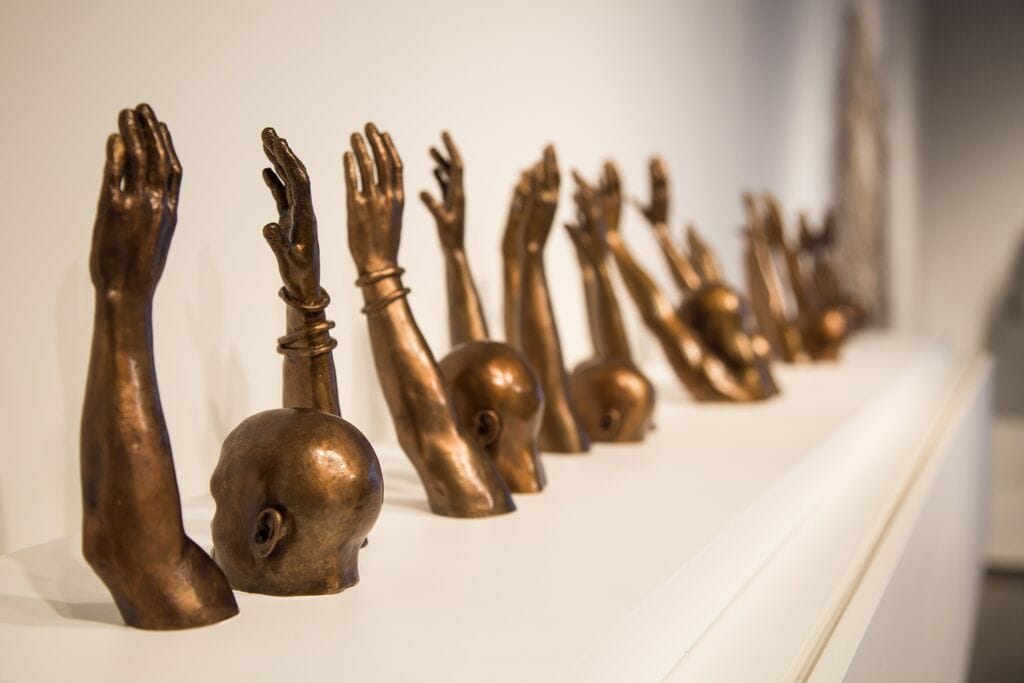
Another exhibition standout is Michael Wesley’s 20.5 – 31.5.2006, a time-lapse photograph of a glass vase full of yellow tulips from the artist’s Tulpen series. Capturing the tulips over the last 12 days in May, 2006, the photo records their budding, blooming and withering in the illuminated smear of an entire lifecycle. As with all time-lapse images this one’s temporal collapsing brings beginnings to endings like the snake that eats its tail. This one condenses birth, life and death into a painterly, vibrant memento mori.

Contemporary gallery-goers are used to seeing self-reflexive art-about-art, but “Seeing Now” offers viewers something different: Art about how we look at art, and the important roles that subjective perspectives play in activating an object or a space. Is a painting a painting if nobody sees it? A photograph? Berger reminded us that “The relation between what we see and what we know is never settled,” but this art insists that we can know more about what we’re seeing when we better understand how we see it.
“Seeing Now” is on view at 21c Museum Hotel in Nashville through December 2018.

